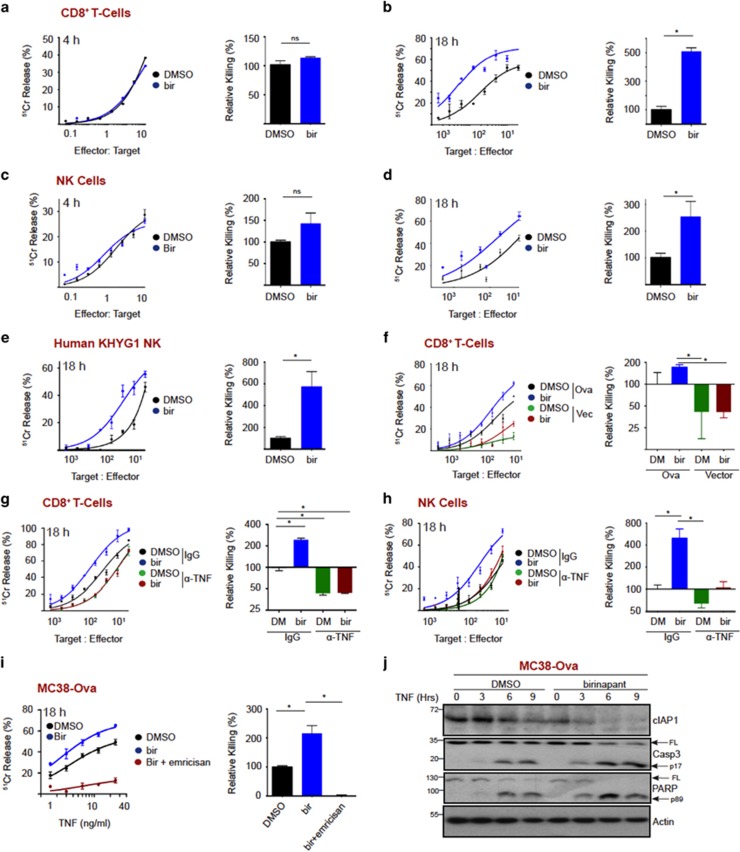Figure 2.
IAP antagonism promotes TNF-dependent cytotoxic lymphocyte killing. (a) Chromium release assay (4 h) using MC38-Ova cells as targets and OT-I T cells as effectors, in the presence or absence of birinapant (1 μM). (b) Chromium release assay (18 h) using MC38-Ova cells as targets and OT-I T cells as effectors, in the presence or absence of birinapant (1 μM). (c) Chromium release assay (4 h) using MC38 cells as targets and murine NK cells as effectors, in the presence or absence of birinapant (1 μM). (d) Chromium release assay (18 h) using MC38 cells as targets and murine NK cells as effectors, in the presence or absence of birinapant (1 μM). (e) Chromium release assay (18 h) using HeLa cells as targets and KHYG1 NK cells as effectors, in the presence or absence of birinapant (1 μM). (f) Chromium release assay (18 h) using MC38-Ova or MC38-Vector cells as targets and OT-I T cells as effectors, in the presence or absence of birinapant (1 μM). (g) Chromium release assay (18 h) using MC38-Ova cells as targets and OT-I T cells as effectors, in the presence or absence of birinapant (1 μM) and anti-TNF-neutralizing antibody. (h) Chromium release assay (18 h) using MC38 cells as targets and murine NK cells as effectors, in the presence or absence of birinapant (1 μM) and anti-TNF-neutralizing antibody. (i) Chromium release assay (18 h) using MC38 cells treated with the indicated concentration of TNF, in the presence or absence of birinapant (1 μM) and emricasan (1 μM). (j) MC38-Ova cells were treated with TNF (50 ng/ml) in the presence or absence of birinapant (1 μM). At the indicated time-points proteins were analyzed by western blotting. Error bars represent the mean±S.E.M. of triplicate determinations from a representative experiment, *P<0.05 by unpaired Student’s t-test

